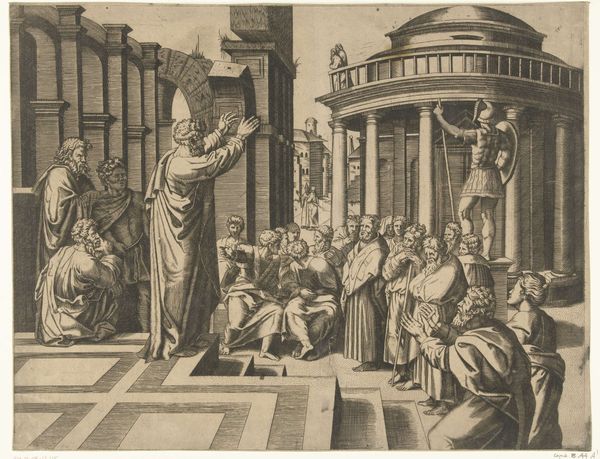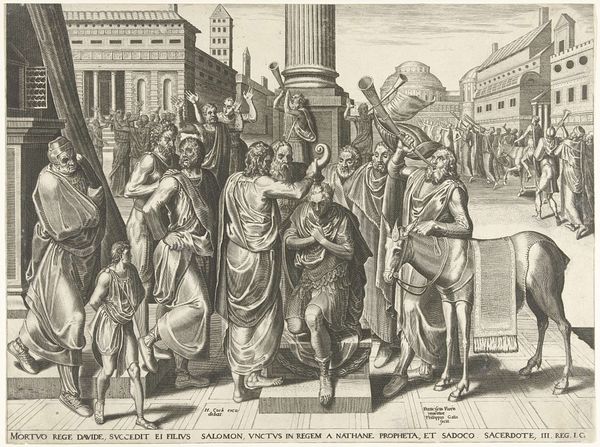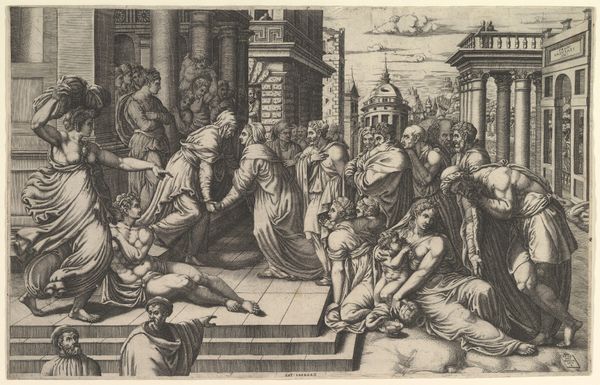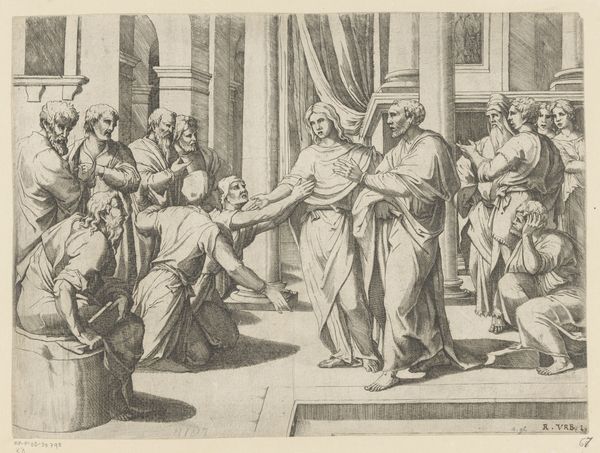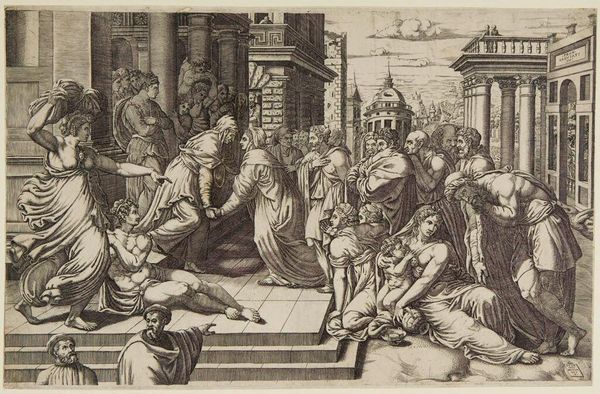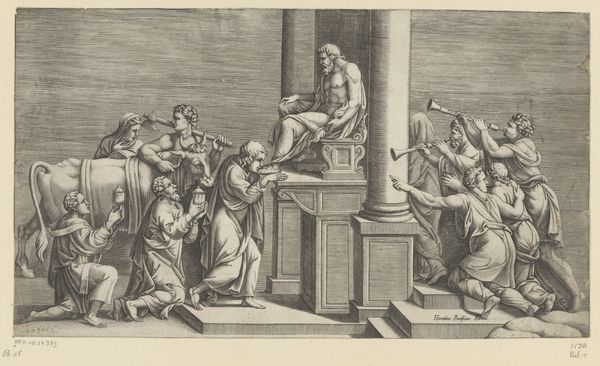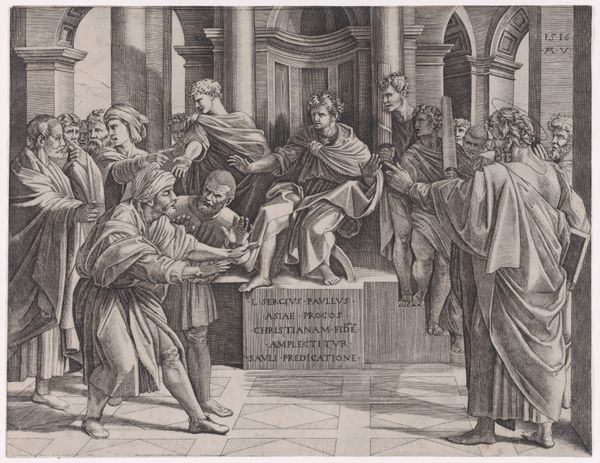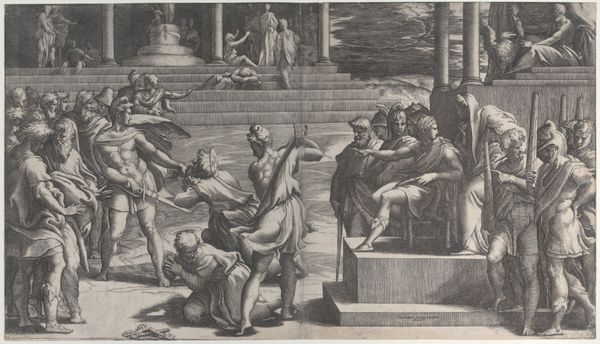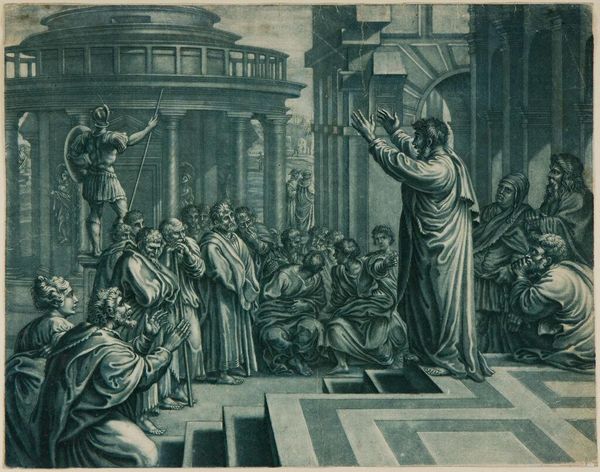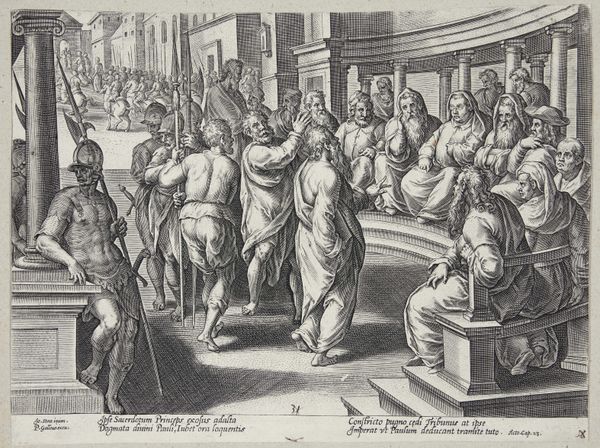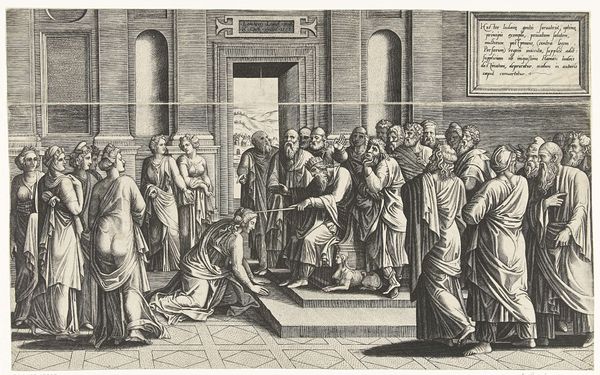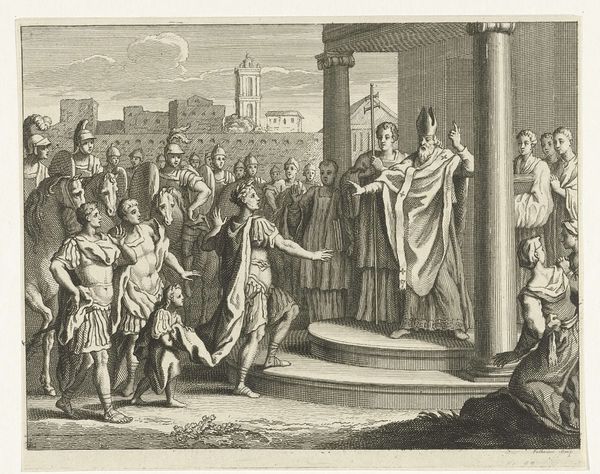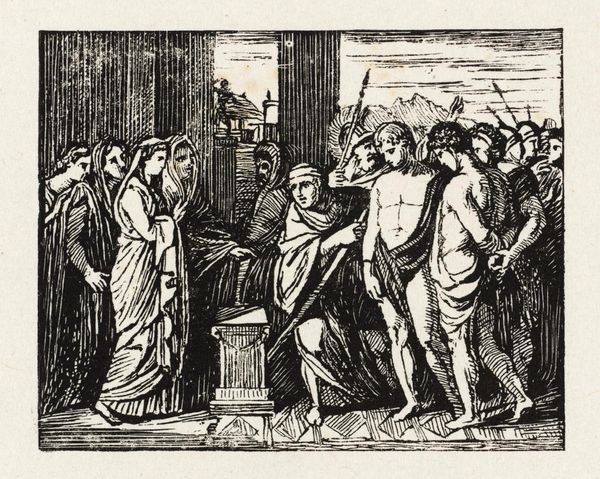
Saint Paul preaching in Athens, after Raphael 1512 - 1525
0:00
0:00
Dimensions: 10 3/8 x 14 1/16 in. (26.3 x 35.7 cm)
Copyright: Public Domain
Curator: Here we have "Saint Paul Preaching in Athens, after Raphael," an engraving created by Marcantonio Raimondi between 1512 and 1525. The piece currently resides here at the Metropolitan Museum of Art. Editor: My first impression is how stark it is— the rigid lines, the pronounced architecture. It’s surprisingly assertive given the subject matter. Curator: Absolutely. Consider the historical weight Raimondi carries by reproducing a Raphael design. He presents Paul not just as a preacher, but as a figure of historical import within this classical revival. Note the architectural setting which invokes Roman grandeur, lending an air of timeless significance to Paul's sermon. Editor: The setting is fascinating. The geometry of the flooring is nearly dizzying. And the statue of Mars looming in the background – it suggests a thematic tension, an old order being challenged by a new faith. The print seems composed of distinct visual fields. Curator: The statue becomes symbolic of the idolatry that Paul condemns, representing the established order that Christianity sought to supplant. Raimondi is doing more than documenting a biblical scene, he is using these icons to invoke a specific reading of history and religious conversion. The crowd itself becomes a stage for varying reactions to Paul’s words – curiosity, skepticism, piety. Editor: True, and the expressions, captured with such precise engraving, pull you in. Look how Raimondi has differentiated each figure – some shrouded in shadow, others brilliantly lit. It's almost theatrical. And while the architecture appears classically derived, it feels somewhat… staged. The uncompleted arch gives an air of precarity. Curator: An excellent point! The unfinished archway subtly hints at the incomplete nature of the pagan world. Also, recall that printmaking allows for the wide dissemination of ideas. Raimondi’s work effectively multiplied the influence of Raphael and the power of the image of Paul's evangelism. Editor: So, as an artifact, the print serves as an ideological tool. The interplay between the graphic elements and the narrative it tells gives this piece a forceful edge. Curator: Precisely. It’s an intriguing synthesis of faith, history, and artistic innovation, leaving a lasting mark on cultural memory. Editor: It really highlights how formal artistic choices reinforce thematic undercurrents. Something easy to overlook, but profoundly present when observed closely.
Comments
No comments
Be the first to comment and join the conversation on the ultimate creative platform.
